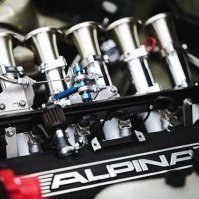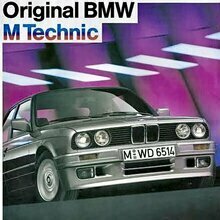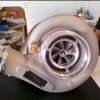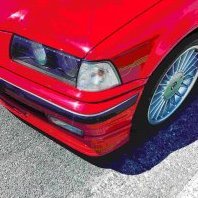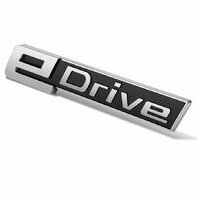Leaderboard
Popular Content
Showing content with the highest reputation on 01/09/21 in Posts
-
2 pointsSnapped this beautiful Black 635csi in Birkenhead this morning while having breakfast. Plate was ‘SIXBMW’ and looked mint, tastefully lowered on BBS 👌
-
2 pointsAt the risk of appearing a pedant, wiki motors reveals the weight of the engines we are discussing as being: S52B32 141 kg, M52B28 163kg and the common garden variety M54B30 as 163kg. We have left a hair on the table 3pedals.😉
-
2 pointsSo, don't know if I should start a new thread some where else. But I have been busy trying to improve this old beast. Had a crack.. at the front bumper got the fog lights installed and working. Then it decides ohh I might start playing up, random misfire on idle and low revs blah blah. Read all the internet had to offer checked all mater of things. Cps had perfect ohm reading, maybe ill check the gap. Supposed to be about 1mm but I can even get a .01 feeler gauge in there. Found the issue, corrected gap and shes running like a champ! Happy 😊
-
1 pointHi all, looking for a left rear hub/surrounding items for e36. I have a hub that cant get the wheel bearing out so need to get what ever associated parts I can. Thanks
-
1 pointThanks for your thoughts. I'm an electrical engineer specialising in power electronics so understand the electrical side of the problem well. I'm of the opinion earthing the radiator will make current where little to none exists now which will make the corrosion worse. BMW didn't earth bond the radiator for a reason. Earthing the radiator will create electrolysis due to current flow. With no earth there will be a significantly slower chemical reaction that isn't accelerated by current flow. With no hoses connected there's >10M ohms from the radiator core to the engine earth. The hoses are new silicone. With the hoses connected there's also >10M ohms. Once coolant is present there's a voltage so ohms cannot be measured. I'm pretty sure there's no leakage current to the engine earth from the radiator core except through the resistance of the coolant which cannot be avoided unless there's no coolant. Earthing the radiator also exposes the system to potential electrolytic effects from bad earths. If the radiator is floating with M ohms of isolation then it's impossible for bad chassis earths to have any effect because the radiator is floating and moves with a potential relative to the engine earth, not the chassis earth. Even if the hoses are dirty and have some resistance this slightly bonds the radiator to the engine earth, not to the chassis so no other earthing issues to the chassis will have any effect. Even if there's a few hundred k ohms to the chassis this represents a few micro-amps max of leakage at the small voltages present. Possibly the biggest issue is I cannot measure the voltage present in the coolant like all the documentation I've found to date says to. Every reference I've seen says to put the positive probe into the expansion tank in contact with the coolant but without touching the metal. This assumes the expansion tank is built into the radiator so the coolant is close to the radiator metal. In my case the expansion tank voltage is acceptable but it's not even connected to the radiator so measuring in the expansion tank does not give a proper result. I'd be interested to know what other BMW owners have as a voltage when measured from the radiator core metal to the engine earth. If it's similar and there's no problems then I'm potentially barking up the wrong tree using this as a metric to know if it's good or bad (then what...).
-
1 pointI still think you need to earth. you say there is no current from radiator but there possibly is, although the radiator is in rubber there is still possibly a measurable slight connection to earth from oils or contaminants on the mounts or bolts. apparently its possible even through the hoses if they are old and dirty inside it can't hurt to test after earthing the radiator anyway. earths are measured in ohms, not every earth will have the same reading due to differing connections, its a bit like jumper leads not all being equal in there ability to transfer current I don't think you can fully remove the current from the liquid so think your wasting time with all the flushes, having many different metals that the liquid is contacting is going to cause currents, liquid carrys a charge that needs to get back to the battery terminal, there is possibly a slight path through the radiator to earth that your tester isn't picking up, you need to be measuring the ohms from all your earths and radiator and you probably need a megger tester that applies a voltage as its testing not a simple probe tester. earthing the radiator makes it 0 ohms or dead in the circuit earths are a real science even in electrical gear especially audio gear but it shows as noise, BMW usually run earth circuits but there were earth points scattered around my e39 from taillights etc and wires that go brittle inside the boot lid flexi rubber hose can cause all sorts of weird faults in e36 some people in custom cars earth the radiator, the cap and even fit an anode inside that is designed to rust away saving the radiator and is an easily replaceable part, a bit like they do on aluminum boat propellers , you replace the anode not the prop. does seem an odd fault but it doesn't happen that bad to all so it seems a bit more specific to your car, good luck
-
1 pointI think the entry point into this is "almost" sensible and as we have suggested a set of ITBs, linkages and complete with the lovely carbon fibre air box RHD produce it would produce the goods and a torque curve to match, after a spot of remapping. Its a good chance for someone to build a reliable engine at reasonable cost. Our American cousins love them, especially with FI now that's another ball game 3pedals........😉
-
1 pointThe S50B32US is the best M50 engine ever produced by BMW. It is amazing though that it was only 240hp and the N52, with admittedly a 20 year development curve, produced an easy 260hp with 200cc less capacity.
-
1 pointI didn't realise Alpina was actually a ship manufacturer, that must explain why the motor was the basis for their E4 / E5 range of engines.
-
1 pointhttps://www.trademe.co.nz/a/motors/cars/bmw/m3/listing/2933188536?bof=xMbcAq70 Not something you see everyday...
-
1 pointLTW flags were all the rage for a while about a decade ago. Blame the E36 M3 LTW. There’s a fiji green E36 up in the hibiscus coast with a full touring car spec LTW flag which has to be seen to be believed.
-
1 point
-
1 point
-
1 pointThere is no current right now, just a potential difference. Earthing the radiator will create current which would increase the rate of reaction. Right now I essentially just have a battery producing a voltage with no load on it. Earthing the radiator will provide a current path to discharge the battery. A battery in storage lasts much longer than one with current draw as the internal corrosion rate in the battery is slower. I'm using Pure-Dew water, first de-mineralised then distilled, $7 for 10L so cheap as. I'm going to try dumping the new coolant and just fill with distilled water to see if the voltage potential drops. Then I'll know for sure if it's galvanic. Just missed the shop shutting earlier - could have just tried Water Wetter and distilled water as another alternative to see what the difference is.
-
1 pointThat looks awesome... I will ask how much a whole interior is... the M3 might get some 25 year love.
-
1 point
-
1 pointI also had great service from him on my 1996 Audi front seat which at 140km has more wear than usual on side bolster. A touch too grippy but look great. I haven't used the car in 6 months so can't comment on the resistance to wear and tear.
-
1 pointNot BMW but I finally got around to properly cleaning the Maserati. The paint looks and feels so much better now and will be a lot easier to clean. The gold flake really shows up now. This is my current process: 1) Wash car 2) Meguiars spray clay using a Repco Eclipse Texture Glide Pro Detailers Claying Block 3) Wash car 4) Autoglym Super Resin Polish 5) Meguiars Ceramic Wax The above takes a bit of time but the effort is actually quite low. The spray clay does almost as good a job as a clay bar but is much easier and both the Autoglym SRP and Meguiars Ceramic apply and remove very easily. I knocked the above out by hand in about 5 hours. It does make me wonder what the "premium" products provide over what I have used. Shitty photos, but you get the picture seeing the gold at the front going to black at the back.


